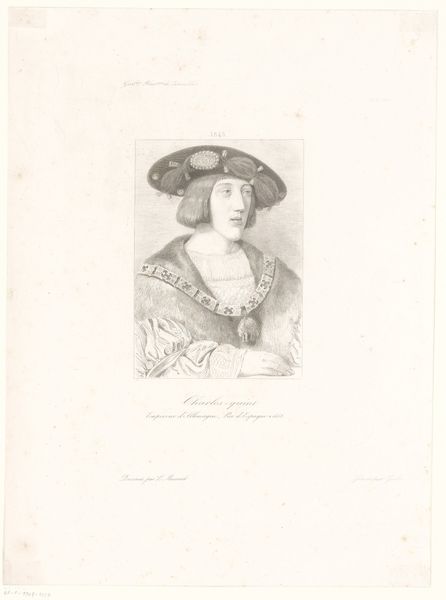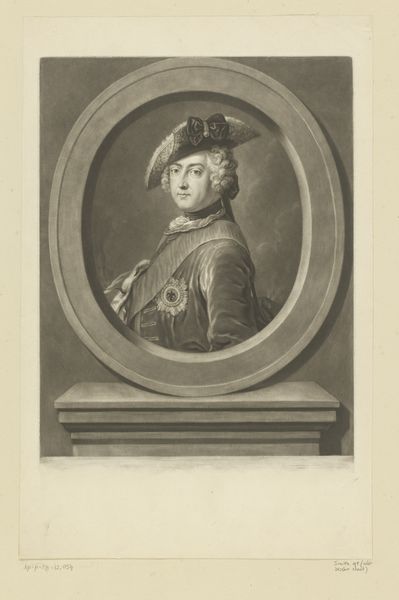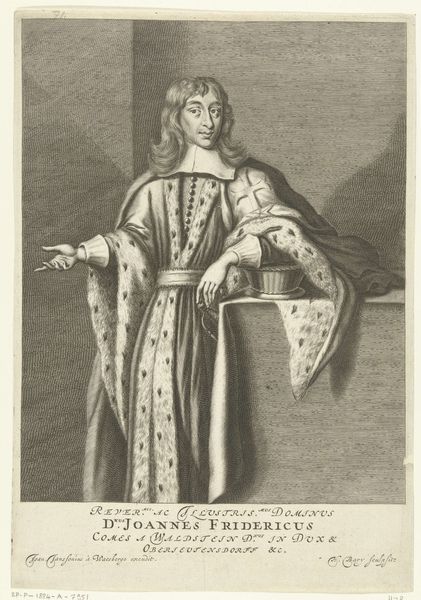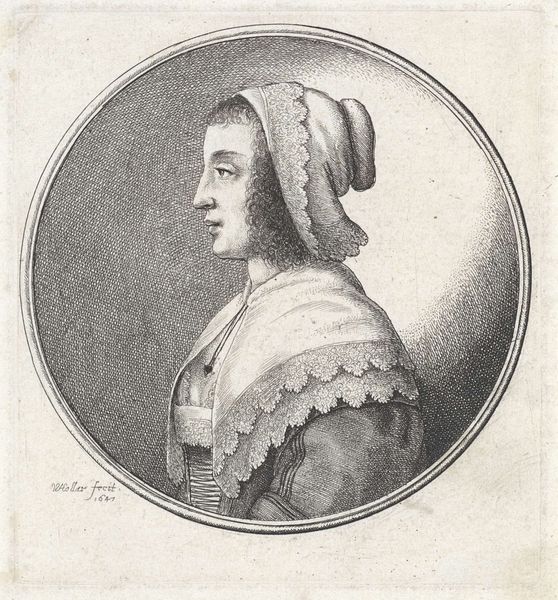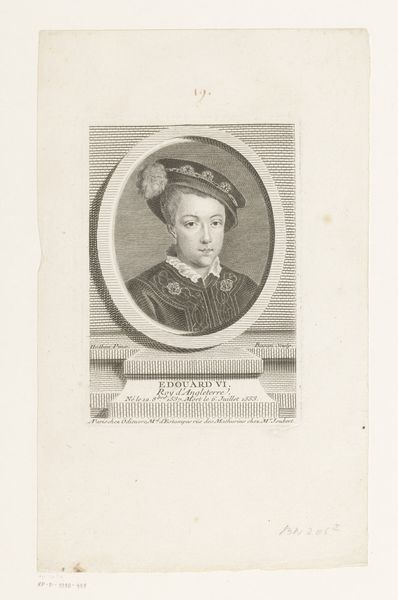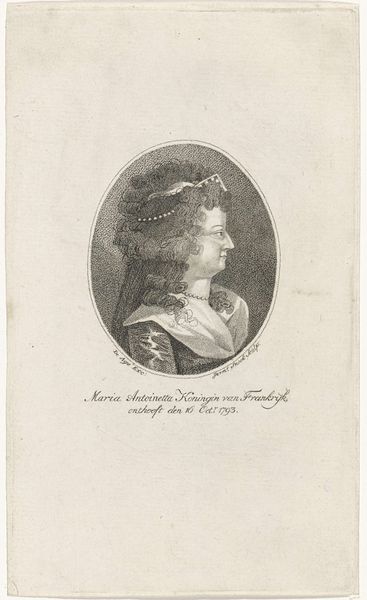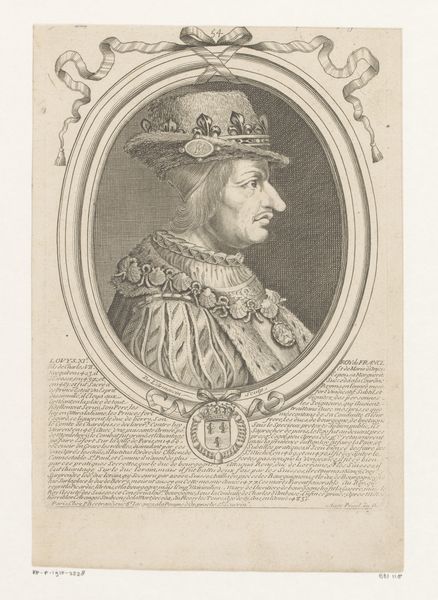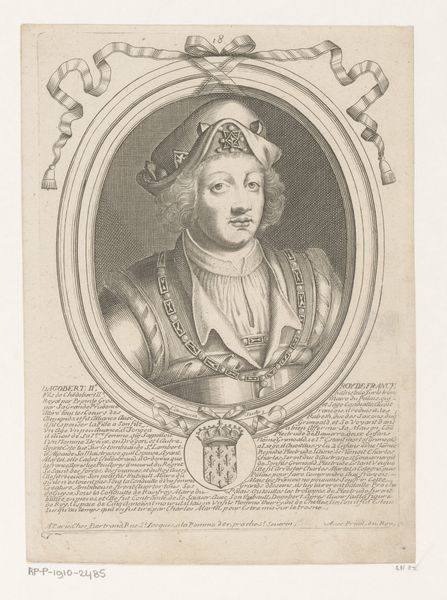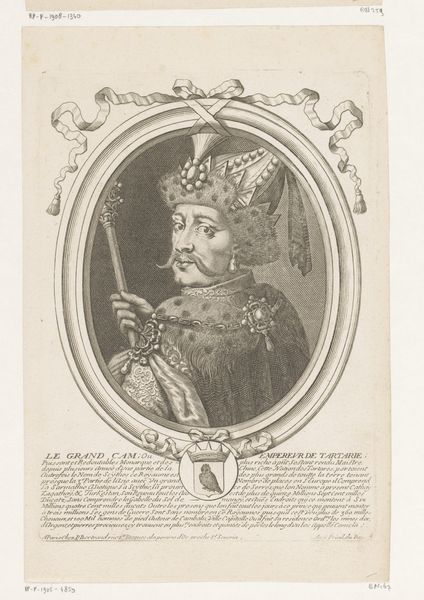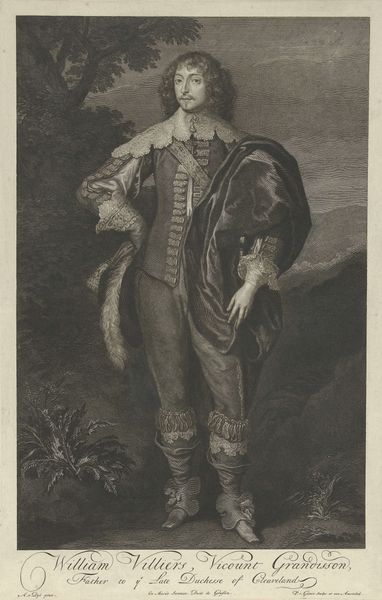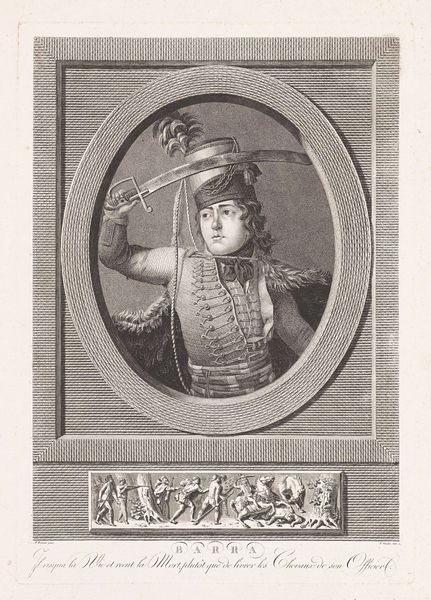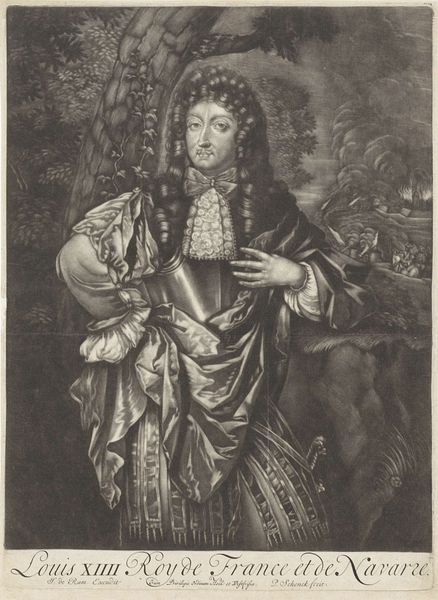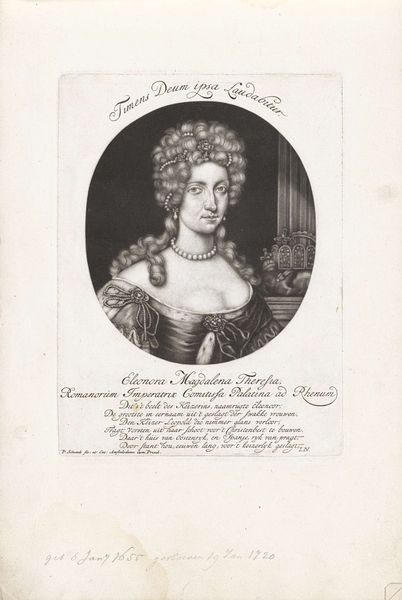
Portret van Christiaan, hertog van Brunswijk-Wolfenbüttel 1841 - 1879
0:00
0:00
Dimensions: height 226 mm, width 150 mm
Copyright: Rijks Museum: Open Domain
Editor: Here we have Edouard Taurel's print of "Portrait of Christian, Duke of Brunswick-Wolfenbüttel", created sometime between 1841 and 1879. It's currently held at the Rijksmuseum. I'm struck by the formal composition and his confident gaze. What can you tell me about it? Curator: This print invites us to consider how images are used to construct and disseminate power. Think about it: why create a portrait of a 17th-century duke almost two centuries later? What purpose does it serve? Editor: Perhaps it’s a romanticized look back? Curator: Possibly. The work leans heavily into Baroque aesthetics—the flamboyant costume, the elaborate crest. These stylistic choices invoke a specific era, but consider the print’s production date in the 19th century. Doesn’t it suggest an interest in historical continuity and legitimacy, maybe even the rise of nationalism, where figures like Christian of Brunswick become symbols of a grander, idealized past? What impact did the printing press and emerging notions of “mass culture” have? Editor: So, you are saying this print wasn't necessarily about historical accuracy but about constructing a specific narrative. Curator: Exactly! Consider who might have commissioned such a piece and how it would be displayed. Museums, private collections – these spaces contribute to how we understand the work's political undertones. Does the medium, engraving, suggest something about its accessibility or intended audience? Editor: That’s given me a new perspective on how to view historical portraits. It's not just about the individual, but the story that someone wanted to tell. Curator: Indeed. Understanding the layers of cultural and historical context surrounding even a seemingly straightforward portrait can be incredibly revealing.
Comments
No comments
Be the first to comment and join the conversation on the ultimate creative platform.
